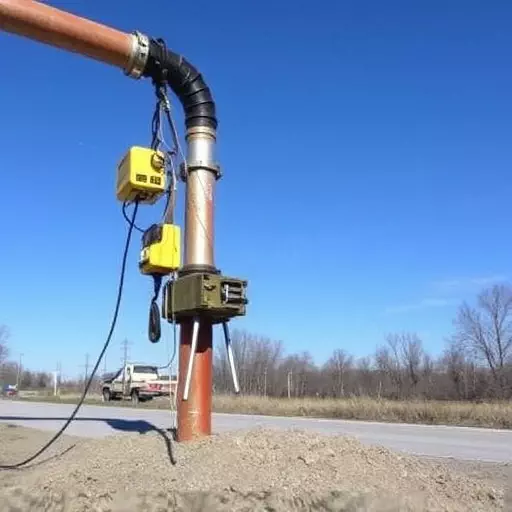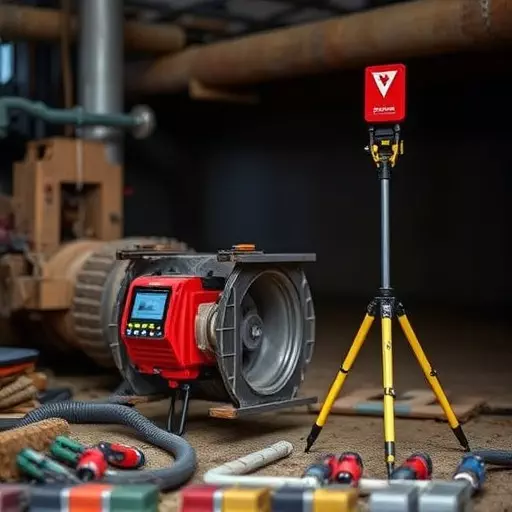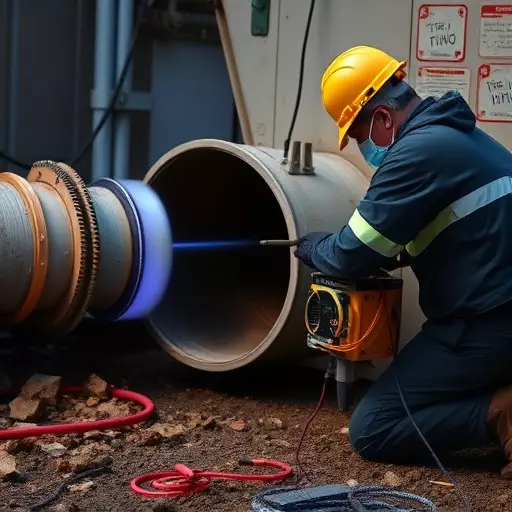Electromagnetic locating with sondes is a game-changing technology in the world of utility and infrastructure management. This non-invasive method uses specialized equipment to accurately identify and map buried pipes, cables, and other utilities, revolutionizing the way professionals navigate subterranean landscapes. In this comprehensive guide, we’ll explore sonde and locating techniques, their numerous benefits, and essential considerations for choosing the right sonde equipment tailored to specific project needs. From electromagnetic induction to ground penetration radar, discover how these advanced methods enhance accuracy, efficiency, and safety in pipe and utility locating.
- Understanding Sonde Equipment and Its Role in Pipe Locating
- – Definition of a sonde
- – Types of sonde equipment
- – How sondes are used for pipe locating
Understanding Sonde Equipment and Its Role in Pipe Locating

– Definition of a sonde

A sonde is a specialized tool used in electromagnetic locating to detect and map buried objects such as pipes, cables, and utilities. It’s a crucial component of modern locating techniques, enabling precise identification and localization of underground infrastructure. The device sends out electromagnetic signals that interact with the buried object, providing valuable data for accurate mapping.
Sonde equipment for pipe locating is designed to navigate through tight spaces and sensitive environments, ensuring safe and efficient detection. These tools are pivotal in various industries, including construction, utility management, and environmental remediation, where precise locating techniques are essential to avoid damage, minimize disruptions, and enhance safety during excavation or installation projects.
– Types of sonde equipment

In the realm of electromagnetic locating, sonde equipment plays a pivotal role in navigating and identifying underground utilities, particularly pipes. These specialized tools are designed to emit electromagnetic signals that can pinpoint the exact location of metallic pipes within the earth. There are two primary types of sondes used in pipe locating: active and passive. Active sondes generate their own electromagnetic field by running electric current through a coil, which then interacts with metallic pipes to determine their position. In contrast, passive sondes rely on detecting natural magnetic fields generated by power lines or other metallic structures, making them more cost-effective but less precise in certain conditions.
When it comes to choosing the right sonde equipment for pipe locating, understanding the specific requirements of the jobsite is essential. For instance, while active sondes offer high accuracy and speed, they might not be suitable for sensitive environments where electromagnetic interference could impact other equipment. On the other hand, passive sondes are ideal for large-scale projects with consistent power lines nearby, ensuring efficient and cost-effective locating techniques. By selecting the appropriate sonde based on project needs, locaters can enhance efficiency, reduce errors, and ensure safe excavation in various terrains, including urban areas where underground utilities are densely packed.
– How sondes are used for pipe locating



